SEAS – JUNE 2018 NEWSLETTER
SEAS – JUNE 2018 NEWSLETTER
News from the School of Engineering and Applied Sciences
Faculty Research and Innovation – The School is Changing
Dear Friends,
 Let me welcome you to the June issue of the School of Engineering and Applied Sciences (SEAS) newsletter. In this issue, we want to provide you some snapshots of our trajectory and examples of the research that we implement in SEAS. We recognize that we are very much aligned with the leadership of President Ronald Mason, who aims to establish UDC as a public higher education model of urban student success.
Let me welcome you to the June issue of the School of Engineering and Applied Sciences (SEAS) newsletter. In this issue, we want to provide you some snapshots of our trajectory and examples of the research that we implement in SEAS. We recognize that we are very much aligned with the leadership of President Ronald Mason, who aims to establish UDC as a public higher education model of urban student success.
We continue to participate in multidisciplinary and multi-departmental grants sponsored by the National Science Foundation, and you will be seeing some examples of that in this newsletter. Partnership with and commitment to community by the SEAS Research Center is expected to provide engineering and technical expertise to regional businesses and, support D.C.’s research-based economy while giving valuable real-life experiences to students.
As we build a pipeline of research, we need to continue to spread our outreach and offerings by initiating new academic programs. We are starting two more master’s degree programs: The Civil Engineering Department will offer a Master of Science degree in Civil Engineering (MSCE) with a focus on Environmental Engineering, while the Mechanical Engineering Department will offer a Master of Science degree in Mechanical Engineering (MSME). We are also expecting to start a Ph.D. program in Computer Science and Engineering in 2018.
These are certainly exciting times to be involved in engineering education, endeavor and I am proud, as you are, to be part of the important work of training the next generation of engineers and computer professionals.
Devdas Shetty, Ph.D.
Dean
Research Through Partnership with Office of Naval Research
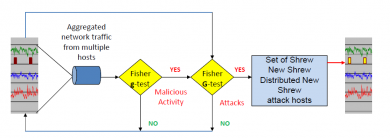
Image of Wireless Sensor Network: Information Driven Blind Doppler Shift Estimation and Compensations Methods
Dr. Paul Cotae’s current research goal is to address cybersecurity attacks and to develop methods of assessing the impact of attacks based on machine learning. He continues to merge his research with growth opportunities at SEAS through creative support for new program development and the launch of the new SEAS Research Center. His most recent research is on cybersecurity, developing Data-Driven Methods and Tools for Computer Network Defense through Network Science for the U.S. Army. Outcomes are:
- define new metrics for anomaly detection and patterns in a spatio-temporal context of available data focusing on slight variations in the big data set, low-and-slow attacks;
- conduct a spectral analysis of network topology;
- improve understanding of information theory from a computer network defense perspective and raise awareness among technologists; and,
- develop a framework for empirical evaluation of machine learning methods in adversarial environments.
Dr. Cotae, professor of electrical engineering, has been instrumental in establishing the newly formed SEAS Research Center, which he will serve as Director from its inception. This research center will enjoy the resources of our full-time faculty, graduate assistants, and state-of-the-art laboratories providing our member affiliates with our focus on problem-solving, scholarly research, and engineering solutions for our industry and government partners.
Dr. Cotae also will be the program director of the new Ph.D. program in Computer Science and Engineering.
Beauty in Micro and Nanoscale Structures
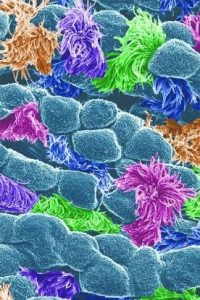
“Trachea Reef” is an award-winning image of cells lining the trachea, viewed with Zeiss Orion NanoFab microscope captured by Eva Mutunga and Kate Klein, University of the District of Columbia and National Institute of Standards and Technology (NIST).
Dr. Kate Klein’s research is in Nanotechnology Microscopy, particularly with electron and ion beam microscopes. Working closely with the National Institute of Standards and Technology (NIST), Dr. Klein, associate professor of mechanical engineering, is exploring applications for both biological imaging and nano scale patterning using the helium ion microscope (HIM). The HIM at NIST is one of just 20 such instruments worldwide and has the unique capability to directly machine materials on the nanometer scale, which has many applications ranging from nano electronics and integrated circuit editing, to the creation of nano pore sensors and optical devices.
Several of Dr. Klein’s students work as NIST summer undergraduate research fellows (SURF), a program she coordinates. “It is fascinating, in one day, students can be playing with atoms.”
“Dr. Klein coauthored a highly cited review article on carbon nanofiber synthesis and was the lead author of a seminal paper on characterizing and functionalizing carbon nanofiber surfaces. This cumulative body of work has been cited over 800 times,” commented Dr. Michael A. Guillorn, Manager and Research Staff Member, IBM Research.
Inventing New Logic and Memory Device with Nano-Spintronics
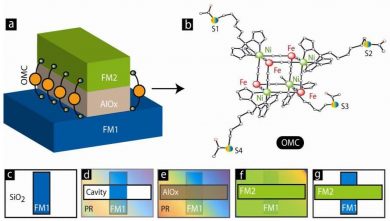 A nanotechnology research lab spearheaded by Dr. Pawan Tyagi, associate professor of mechanical engineering, focuses on the following areas:
A nanotechnology research lab spearheaded by Dr. Pawan Tyagi, associate professor of mechanical engineering, focuses on the following areas:
- Nanotechnology: Nano electronics, Nanospintronics, Nanoscale materials for thermal energy.
- Energy: Easily recyclable metal-based solar cells and solar thermal energy systems.
- Additive manufacturing: Electrochemistry-based metal additive manufacturing, surface modification, and adding intelligence to critical 3D printed components.
- Workforce development: Nuclear energy, renewable energy, smart grid, additive manufacturing.
The research focuses on making a quantum leap from the current state of the art in the spintronics area. It is noteworthy that due to spintronics, present-day computer memory devices have improved several thousand times and all of us are using spintronics in smart devices and computers. Dr. Tyagi is concentrating on harnessing quantum spin state of molecular nanomagnets for developing the next generation of computer devices, solar cells, and biomedical sensors.
With significant support from the Department of Energy’s National Nuclear Security Administration (DOE-NNSA), Dr. Tyagi’s research group has been investigating surface finishing of high permission modification and components used in the aerospace and nuclear industries.
Nano Enhanced Thermal and Energy Research Provides Solutions for Heat Transfer Solutions
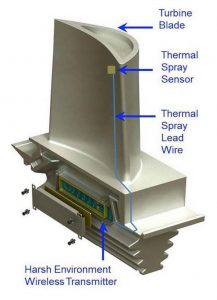 Adding Intelligence to 3D Printed Components 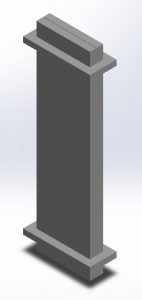 Design and Fabrication of a Microchannel Heat Exchanger Thermal transport at nanoscale is receiving wide attention due to a diverse spectrum of technology such as thermal management in nanoelectronics and optoelectronics, thermoelectric devices, nanoenhanced photovoltaics, and nanoparticle-mediated thermal therapies are benefiting from the application of nano-engineered materials and devices. The focus of Dr. Xu’s research is on the application of heat transfer materials using nanotechnology and characterizing their thermophysical properties. With the continuous decrease in the size of devices and structures, the increase in their operating speeds and frequencies, thermal conditions imposed upon them become ever more aggressive. Ability to control thermal transport efficiently, such as a scalable solution to remove a significant amount of heat from a certain spot within a short time frame, is crucial to the development of next-generation communication, medical, and energy technologies. Dr. Jiajun Xu, assistant professor of mechanical engineering, also explored the redesign and optimization of existing heat exchange devices to allow additional margin for the whole thermal management system through both experimental and numerical study. He has authored and co-authored three provisional patents, three book chapters, and over 20 peer-reviewed journal papers and peer-reviewed conference papers. Significant research achievements and contributions to the field include:
|
Computational Intelligence: Clustering Algorithm for Big Data Computing
Recent advances in modern technologies such as infrared remote sensing technology, 4D CT-scans technology, and DNA microarrays, have led to the proliferation of massive and imbalanced data. The imbalanced data sets are pervasive in real-world data-intensive applications ranging from cancer diagnoses to the financial industry.
Dr. Nian Zhang, associate professor of electrical and computer engineering, is conducting research in this area. She has developed a new method combining the principal component analysis and clustering algorithm to study the high dimensional and highly overlapped data. Her work contributed to the creation of efficient algorithms for achieving dimensional reduction and clustering on the high dimensional and imbalanced data set.
Additional research areas include storm water pollution monitoring, surface roughness evaluation of engineering surface, and robotic navigation with a new algorithmic approach to detect targets in challenging environments.
Her research appears in 14 journal papers, and more than 60 peer-reviewed conference publications.
Typical fingerprint trace particles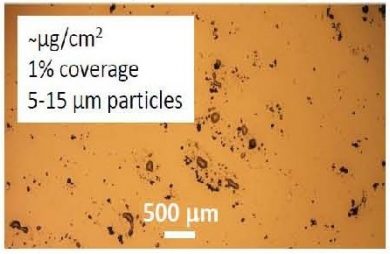 |
Water-borne improvised explosive device |
Founders Day Celebration included recognition of SEAS faculty member
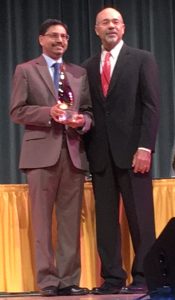 The theme of this year’s Founders Day, “Celebrating the Past: Creating New Pathways to Excellence,” was embodied by reviewing the history and forming of the institution, an inspirational keynote speaker, Courtney Sanders, SBPA Alumna 2012, and recognizing outstanding students, faculty, and staff.
The theme of this year’s Founders Day, “Celebrating the Past: Creating New Pathways to Excellence,” was embodied by reviewing the history and forming of the institution, an inspirational keynote speaker, Courtney Sanders, SBPA Alumna 2012, and recognizing outstanding students, faculty, and staff.
Dr. Pradeep Behera, professor of civil engineering and department chair, was awarded the Dr. Marjorie Holloman Parker Distinguished Educator’s Award. This recognition is presented annually to an individual who has demonstrated outstanding leadership in his or her profession and whose work has contributed to the betterment of one’s community and its citizens on a local, national, or international level.
SEAS, along with UDC, is changing, growing, and is primed for national recognition in engineering and computer science.
UDC and Johns Hopkins University “Engineering Innovation Program”
provides a rich, educational experience for high school students to learn about nanotechnology, 3D printer-based manufacturing, renewable energy laboratories, and a zero energy home.
June 25-July 20, 2018 | Contact: Dr. Pawan Tyagi (Email: ptyagi@udc.edu)
Summer WEAVE Workshop
WEAVE (Women Exposed Actively to the Value of Engineering) is a new program for high schoolers providing engineering exposure via hands-on experiments in biomedical engineering.
June 18-21, 2018 | Contact: Dr. Lara Thompson (Email: lara.thompson@udc.edu)
Summer Biomedical Engineering Workshop at UDC
This Summer Workshop for those 18 and over will focus on design projects and exposure to real-world issues, via hands-on interaction and field trips to biomedical-related institutes.
June 25-28, 2018 | Contact: Dr. Lara Thompson (Email: lara.thompson@udc.edu)
Louis Stokes Alliance for Minority Participation Summer Program at UDC
focuses on exposing underrepresented minority students to STEM through workshops on cybersecurity and python for scientific programming.
June 11-July 13, 2018 | Contact: Dr. Briana Wellman (Email: briana.wellman@udc.edu)
ASM Teacher Material Science Summer Camp at UDC
Thirty high school teachers will participate in workshops on engineering design through hands-on Materials Science experiments to strengthen the curriculum at the secondary level.
July 16-20, 2018 | Contact: Dr. Kate Klein (Email: kate.klein@udc.edu)
UNDERGRADUATE
Bachelor of Science in Biomedical Engineering (BSBME)
Bachelor of Science in Civil Engineering (BSCE)
Bachelor of Science in Computer Science (BSCS)
Bachelor of Science in Electrical Engineering (BSEE)
Bachelor of Science in Information Technology (BSIT)
Bachelor of Science in Mechanical Engineering (BSME)
GRADUATE
Master of Science in Computer Science (MSCS)
Master of Science in Electrical Engineering (MSEE)
NEW
Master of Science in Civil Engineering (MSCE)
Master of Science in Mechanical Engineering (MSME)
Doctor of Philosophy in Computer Science and Engineering (PhD CSE)*
*pending approval by the Middle States Commission on Higher Education